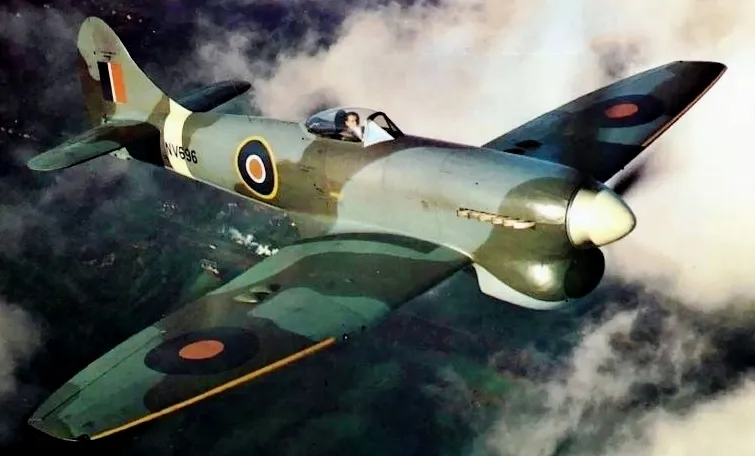After training, he was posted as a flight instructor to the No. 13 Service Flying Training School. After a year as a flight instructor, he got a posting in the UK to the No. 501 Squadron RAF at RAF Hawkinge, flying the Spitfire Mk V's. He scored his first victory on 8 June 1944, shooting down a Messerschmitt Bf 109 near Le Havre[1] It was also the only victory he scored on a Spitfires.[2] When 501 Squadron was re-equipped with Tempests, he was posted to No. 274 Squadron RAF. Before moving to Europe, Fairbanks shot down two V-1 flying bombs. Over the next two-and-a-half months, he scored 11 1/2 victories. Thus, he achieved with a remarkable tactic - at about 5 o' clock every day, he would orbit the airbase in the Rhine at 3,000 feet and regularly, dive to ground level for a few seconds, before climbing back to altitude. As the airfield was the most frequently-used base by Luftwaffe fighters, he would usually make contact with a Bf 109 or Focke-Wulf Fw 190. This tactic, although effective, meant he frequently lost his No 2's.[3] On 19 November 1944, Fairbanks was hit by ground fire. His fuel tank ignited and burned away his fuselage, but he was able to return to Volkel safely. He was posted to No. 3 Squadron in December 1944, then back to No. 274 Squadron on 9 February 1945 as squadron leader. Two days later, he downed an Arado Ar 234 jet reconnaissance bomber, the first of its type to be downed by the allies.[citation needed] On his way back from a train busting mission on 28 February 1945, Fairbanks was leading a section of 6 aircraft, including flying ace (and later author) Pierre Clostermann to attack 40 Fw 190s and Bf 109s. He was shot down by a Fw 190 and captured. He spent the rest of the war as a prisoner of war.[
source: Wikipedia



